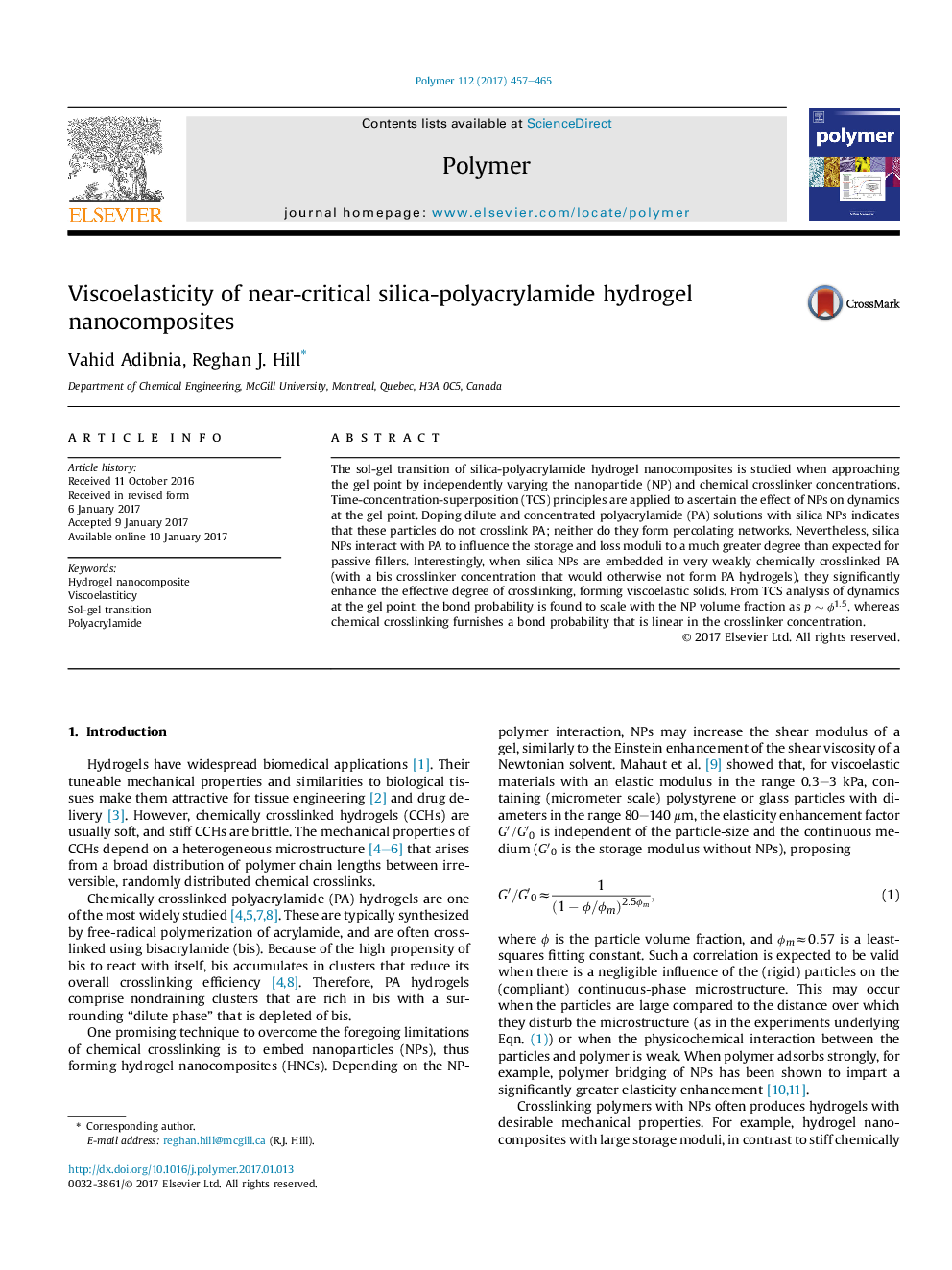| Article ID | Journal | Published Year | Pages | File Type |
|---|---|---|---|---|
| 5178427 | Polymer | 2017 | 9 Pages |
â¢Time-concentration superposition applied to study nanoparticle (NP) crosslinking of PA.â¢Silica-PA interaction insufficient to crosslink PA without bis.â¢Silica NPs enhance mechanical properties significantly more than rigid passive fillers.â¢With NPs, less bis required to gel PA, suggesting NPs add physical crosslinks.â¢For nanocomposites, bond probability scales with NP volume fraction to the power 1.5 at the gel point.
The sol-gel transition of silica-polyacrylamide hydrogel nanocomposites is studied when approaching the gel point by independently varying the nanoparticle (NP) and chemical crosslinker concentrations. Time-concentration-superposition (TCS) principles are applied to ascertain the effect of NPs on dynamics at the gel point. Doping dilute and concentrated polyacrylamide (PA) solutions with silica NPs indicates that these particles do not crosslink PA; neither do they form percolating networks. Nevertheless, silica NPs interact with PA to influence the storage and loss moduli to a much greater degree than expected for passive fillers. Interestingly, when silica NPs are embedded in very weakly chemically crosslinked PA (with a bis crosslinker concentration that would otherwise not form PA hydrogels), they significantly enhance the effective degree of crosslinking, forming viscoelastic solids. From TCS analysis of dynamics at the gel point, the bond probability is found to scale with the NP volume fraction as pâ¼Ï1.5, whereas chemical crosslinking furnishes a bond probability that is linear in the crosslinker concentration.
Graphical abstractDownload high-res image (306KB)Download full-size image
